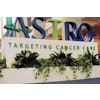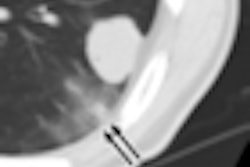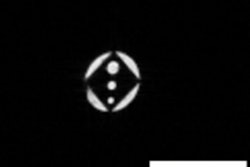There's a direct relationship between radiation dose to the urethra and genitourinary toxicity in prostate cancer patients who receive both high-dose-rate brachytherapy and hypofractionated external-beam radiation therapy (EBRT), Japanese researchers report in the current issue of the International Journal of Radiation Oncology, Biology, Physics.
Men with intermediate- or high-risk prostate cancer who are treated with high-dose-rate brachytherapy and hypofractionated EBRT often experience genitourinary toxicities. Researchers from Japan evaluated the severity of genitourinary toxicity in 100 men, finding a dose-response relationship between the urethral dose received during treatment and the severity of late genitourinary toxicities.
The findings of the multidisciplinary team of radiologists, urologists, and radiation oncologists from Kitasato University School of Medicine in Sagamihara are published in the September 1 issue of the International Journal of Radiation Oncology, Biology, Physics (2009, Vol. 75:1, pp. 23-28). Dr. Hiromichi Ishiyama, radiologist and lead author of the study, and colleagues also investigated factors that might affect the severity of toxicity.
The patient cohort included 100 Japanese men ranging in age from 43 to 87 years who received iridium-192 high-dose-rate brachytherapy combined with hypofractionated EBRT at Kitasato University Hospital between November 2003 and January 2006. The patients were either at intermediate risk (clinical stage T2b, prostate-specific antigen [PSA] score of 10-20 ng/mL, and a Gleason score of 7) or high risk (clinical stage T2c, or PSA greater than 20 ng/mL, or a Gleason score of 8 or greater). Their prostate volumes ranged from 6.9 to 650.25 cm3.
All patients underwent six months of neoadjuvant hormone therapy before undergoing radiation therapy. High-risk patients also continued the therapy for an additional three years.
Brachytherapy was performed using six needles inserted in the central portion of the prostate and 12 needles in the peripheral portion. Dose limitation was set at 10 Gy per fraction for urethral reference points and 4 Gy per fraction for rectal reference points. The mean dose to 90% of the planning target volume was 6.3 Gy, the mean volume receiving 100% of the prescribed dose was 54.9%, and the mean volume receiving 150% of the prescribed dose was 8.3%.
The patients received five fractions of high-dose brachytherapy, with the first administered on the day of implantation, followed by two days of two sessions each day. Six days following the completion of the brachytherapy treatment, the patients received EBRT, administered in five weekly fractional doses of 3 Gy over a two-week period. The radiation field was limited to the prostate gland with a 7-mm leaf margin using multileaf collimators.
The prostatic urethra received almost the same radiation dose as the prostate because it was encompassed by the radiation field for the EBRT. It was delineated by identifying the external contours on CT images in the same slices as the prostate.
Patients who had lymph node swelling received 40-50 Gy in fractions of 2 Gy to the lymph nodes, and patients with bone metastases had these irradiated to 30-40 Gy.
The patients were followed for a minimum of two years and up to 51 months, having four follow-up visits the first year following treatment and either two or four visits per year for subsequent years.
A total of 70 patients experienced acute toxicity. Of this group, the overwhelming majority (82.9%) experienced grade 1 toxicity. Six patients (8.6%) experienced grade 2 toxicity, and the same number experienced grade 3 toxicity. The six patients who had grade 3 toxicity experienced retention of urine and one also had bleeding. Acute grade 3 toxicity resolved for most patients within one month.
A total of 84 patients experienced late toxicity that occurred at a median of 27 months. The majority, 68 patients, had grade 1 toxicity, but four patients developed grade 2 toxicity and 12 patients developed grade 3. Eight of the grade 3 patients were treated with internal urethrotomy, and symptoms for the other patients were resolved with temporary catheterization for a one- to six-month period.
The researchers determined that acute grade 3 genitourinary toxicity was significantly higher in urethral volumes receiving 1 to 4 Gy in high-dose-rate brachytherapy than in patients with grade 0-2 toxicity. Doses of 12 Gy and 13 Gy and 70% and 80% of the urethral volumes caused significantly higher late grade 3 toxicity than in patients experiencing grade 0-2 toxicity.
The researchers noted that because the prostatic urethra runs through the prostate gland, it is difficult to prevent it from getting a low dose in high-dose-rate brachytherapy. The low dose that the urethral volume received correlated with acute genitourinary toxicity.
By Cynthia E. Keen
AuntMinnie.com staff writer
September 1, 2009
Related Reading
Brachytherapy combo improves prostate cancer results, July 22, 2008
External radiation and brachytherapy effective for high-risk prostate cancer, August 27, 2007
Copyright © 2009 AuntMinnie.com



















